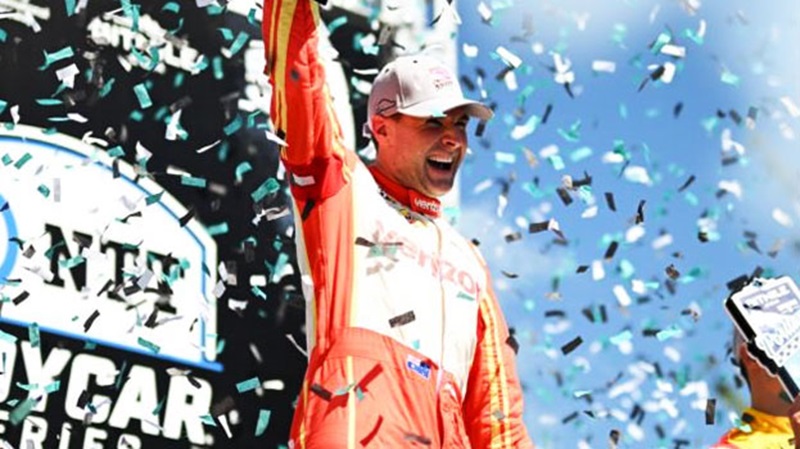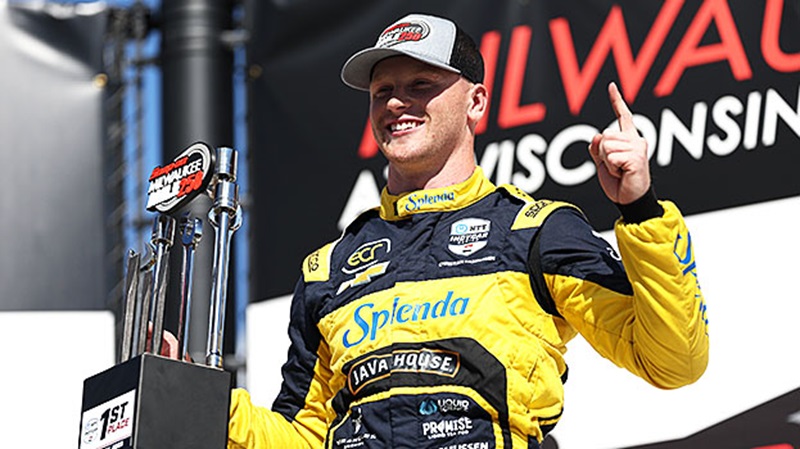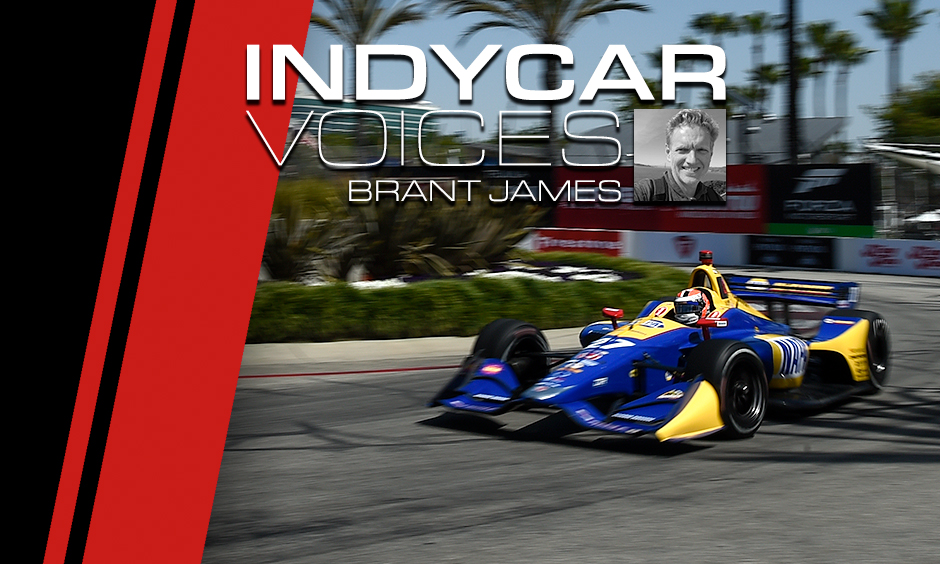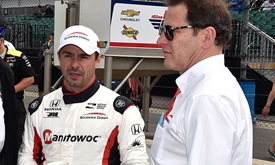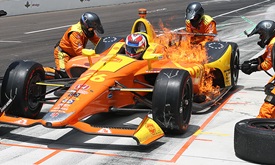Recent championship trend doesn't bode well for Indy 500 winner Power
MAY 31, 2018
Will Power’s first Indianapolis 500 win in 11 attempts felt very much like the consummation of a career that has becomes historically more relevant with each passing season. The 37-year-old Australian had stalked and lost and finally captured a Verizon IndyCar Series championship in 2014. His 34 wins is tied for eighth all-time and his 51 poles are third behind only Mario Andretti and A.J. Foyt. Always good company.
Coming off a sweep of the month of May, having also won the INDYCAR Grand Prix, Power embarks on the final 11 races of the season with the points lead heading into this weekend’s Chevrolet Detroit Grand Prix presented by Lear, where he has won twice since 2014.
These are all positive narratives for Power as the season shifts from the undeniable focus, a push toward the Borg-Warner Trophy, to the prize awaiting after the Sept. 16 Grand Prix of Sonoma: a season championship. But unless Power proves himself an outlier to recent series trends, he’ll be left to assuage the disappointment over failing to become just the third active multiple champion in the series.
Because where once, in a haughty period from 2005-2010 in which the Indianapolis 500 was a prime indicator of the Verizon IndyCar Series champion in a given season, there are currently two distinct portions of the campaign. There is the season at large and the Indianapolis 500 in a vacuum.
That’s not to suggest – even though the vast majority of drivers would probably trade a championship, two, three, for an Indy 500 win – that focus wanes for the driver whose legacy has changed on a given Memorial Day weekend. But winning on the Indianapolis Motor Speedway oval is a different matter than winning on the diverse palate that is now the series schedule.
Dan Wheldon followed his first Indy 500 win with a first title in 2005. The following spring, Sam Hornish Jr. chased down Marco Andretti in the final throes to conquer Indy for the first time before winning his first crown with Team Penske and third overall.
Dario Franchitti, in his last season with what is now Andretti Autosport, claimed his first of three Indy 500 wins and first of four championships in 2007. Scott Dixon won his first and only 500 and second championship of four in 2008. Helio Castroneves is the outlier in this time period, winning the Indianapolis 500 in 2009 but finishing fourth in points to champion Franchitti, who was with Chip Ganassi Racing by this time. Franchitti swept both Indy and the title again in 2010.
But no one has done it since. Few have actually gotten very close.
Juan Pablo Montoya had both within grasp in 2015, winning the Indy 500 for a second time and entering the season finale at Sonoma Raceway with a 34-point lead over Graham Rahal and 47 up on Dixon. But Montoya was undone by an incident with Power, allowing Dixon to swipe his most recent championship with a third win of the season that gave him the crown over Montoya on tiebreakers with one more victory.
Montoya bemoaned Dixon’s benefit of double points awarded in the Sonoma final – although he had reaped the same at Indianapolis – and his shortfall is emblematic of the oddity that the Indianapolis points bonus, instituted in 2014, has not made the kings of May the kings of the entire season.
Power enters the doubleheader weekend on Detroit’s Belle Isle with a slim two-point lead in the standings over Alexander Rossi, who tore from the 32nd starting position to finish fourth in the Indy 500. Defending series champion and Power teammate Josef Newgarden is just 10 points behind Power.
Power’s double-points bounty in the 500 – and May sweep counting his the INDYCAR Grand Prix – have atoned for the first four races in which he finished 21st or worse twice. It makes the Team Penske driver’s case like that of Takuma Sato last year and Rossi in 2016. Sato had finished 12th or worse in three of the first five races last year before outdueling Castroneves for a star-making Indy 500 triumph, then regressed to his norm for the rest of the season to finish eighth in points. Rossi had finished 10th or worse in his first four races as a rookie before a stunning fuel-gambit victory two years ago.
He muddled through much of the season before improving in the final weeks, foreshadowing a growth season in 2017 and what appears to be a full bloom this campaign with a third career win already secure.
The last two series champions, Power’s Team Penske comrades Simon Pagenaud in 2016 and Newgarden in 2017, have yet to win the Indianapolis 500. They have half the legacy work remaining.
Power has more to do, too, after long contending that he considered seasons as “championship-based.” He still might. If so, he has an objective. And a trend to upend.



